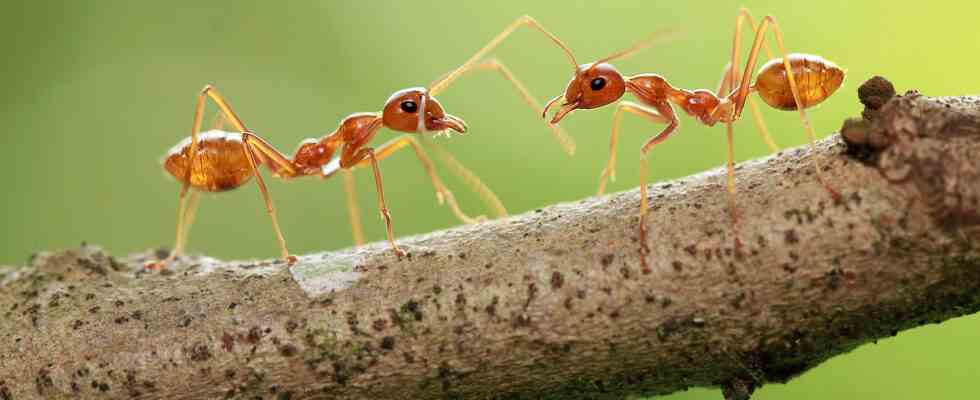Status: 10/15/2022 09:02 a.m
Up to a million animal and plant species are threatened with extinction in just a few decades. Experts are already warning of tipping points for the ecosystem. What dangers are there – and what can we do about them?
What is a tipping point in species extinction?
Tipping points are often mentioned in connection with the climate crisis. The melting of the ice sheets or the deforestation of the Amazon rainforest are described as such, for example. This means: Above a threshold value, the consequences can be almost irreversible and result in further chain reactions. Such physical tipping points also affect species extinction.
According to scientists from the University of Oldenburg, however, the term tipping point can also be problematic in connection with biodiversity: A clearly defined value or range in which an ecosystem is still considered stable is even counterproductive for species protection, since we could then overlook smaller, gradual changes .
How do chain reactions endanger ecosystems?
The fact that ecosystems become fragile as a result of species extinction is due, for example, to the fact that all living things in a food pyramid have their function and are dependent on one another. Creatures that, like ants, are regarded as ecosystem engineers often even have a key function: many other creatures depend on them. However, hunting animals can also play a key role, as researchers discovered in the USA in the 1960s: Without certain starfish in a coastal strip, mussels soon became dominant and damaged the ecosystem.
The examples make it clear that even the absence of individual animals can have far-reaching consequences – and every species is important. Since we do not yet know many species, we do not know exactly which of them have key functions in which ecosystems. This is one of the reasons why, according to researchers, we should protect nature more as a whole.
Where is there evidence of tipping points in species extinction?
There are already some indications: Even the smallest, almost unnoticed changes in the composition of the zooplankton can have serious consequences for ecosystems. Certain zooplankton organisms, such as small copepods, are now too warm in the southern North Sea. Instead, other types of zooplankton now live there. This has consequences for fish: “A match-mismatch dynamic is becoming more and more common,” says Dr. Anne Sell, biologist at the Thünen Institute for Sea Fisheries Bremerhaven. This means that the prey of a living creature shifts in terms of time or location.
This applies to cod, for example, which spawns mainly in late winter. Up until a certain point in time, cod larvae have to eat zooplankton of a certain size in order to survive. However, the new dominant species of zooplankton is most abundant in late summer, not spring: too late for cod offspring. As there are now fewer, smaller and less nutrient-rich zooplankton, cod larvae have a harder time finding food and surviving. If the cod stock size changes, this in turn affects other species.
At the same time, the higher temperatures mean that invasive species such as jellyfish and squid are spreading more and more. Ecological tipping points often also have economic consequences – for fishermen, for example. According to scientists from the University of Hamburg, the cod, as the cod is called in the Baltic Sea, has suffered from overfishing already passed a tipping point.
Can there also be chain reactions with positive effects?
Yes, because when animals and plants recover, entire ecosystems can stabilize again, as the example of the sea otter shows. More sea otters in the sea will benefit the Pacific Coast kelp forests, which are home to many sea creatures. Sea otters feed on sea urchins, which would otherwise become more widespread, and damage kelp forests.
According to one study, sea otters can even stimulate the reproduction of algae, by digging there in search of food. This increases the genetic diversity of the seaweed forests and protects them better from the effects of climate change. Sea otters were almost extinct and are still “endangered”.
Such positive effects can also be observed in Europe: beavers can help improve water quality, which in turn helps other creatures. Beavers even help us humans: scientists from Great Britain are investigating how beaver burrows can mitigate floods caused by extreme weather.
Positive chain reactions can also occur when we humans change our behavior: According to one study, there is despite insect mortality, more warmth-loving dragonflies in Germany. These dragonfly species are coping better with rising temperatures resulting from climate change. But they also benefit from the fact that the water quality has improved over the past thirty years through various protective measures and they can find more food again.
Why don’t we notice the extinction of species earlier in everyday life?
Despite such good news, we should not underestimate the extinction of species: One million animal and plant species are threatened with extinction worldwide. If one species fails, other species can be affected. Nevertheless, we usually only notice this threat in everyday life when a species has disappeared.
According to experts, this could also be due to the so-called shifting baseline syndrome: scientists found that a generation has the impression that biodiversity has changed little compared to previous decades or centuries. We are simply used to the current situation and take it as a benchmark. We are less aware of how biodiversity was in the past. Questioning this thinking could be an important step towards more commitment to species protection.

